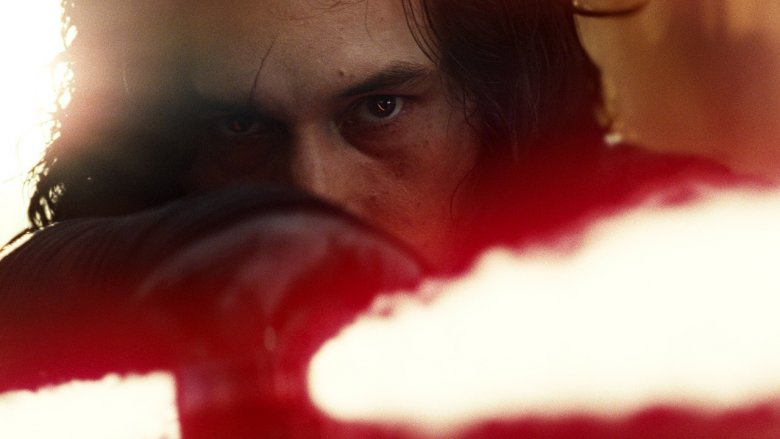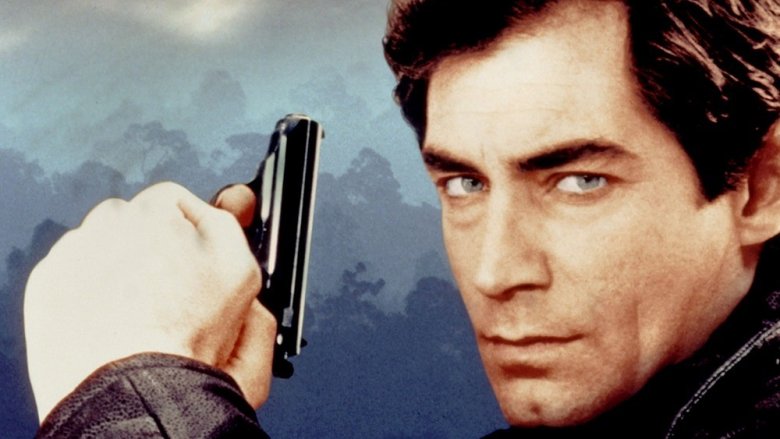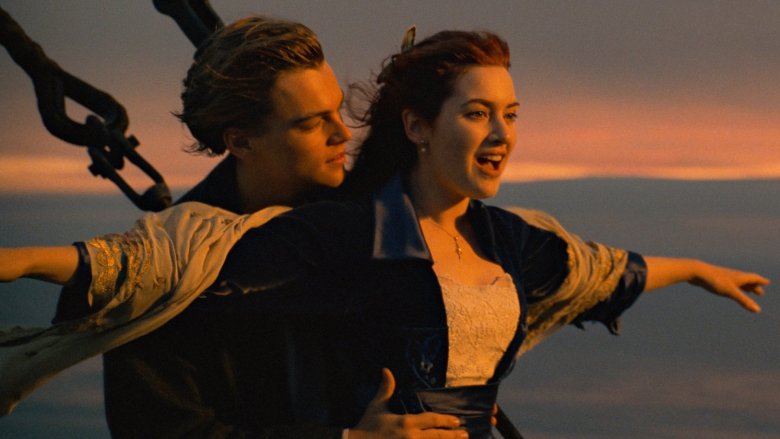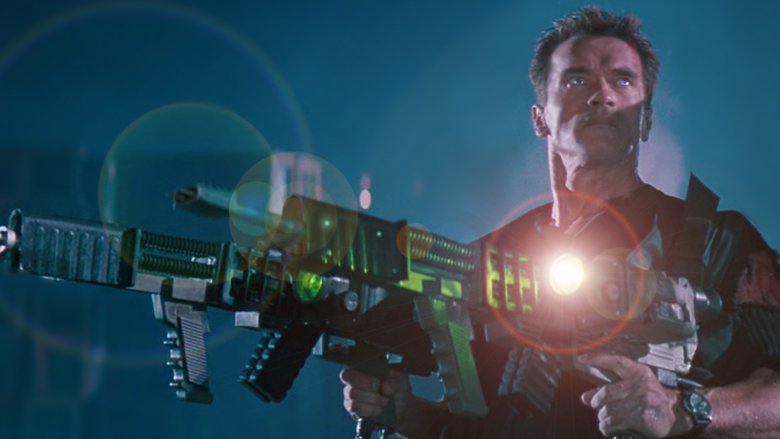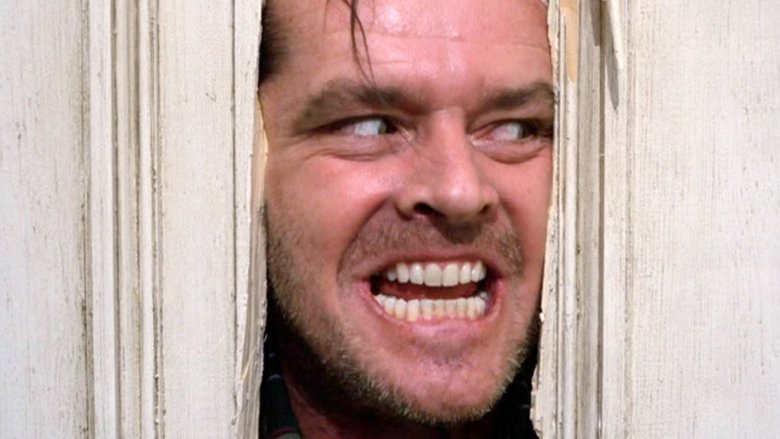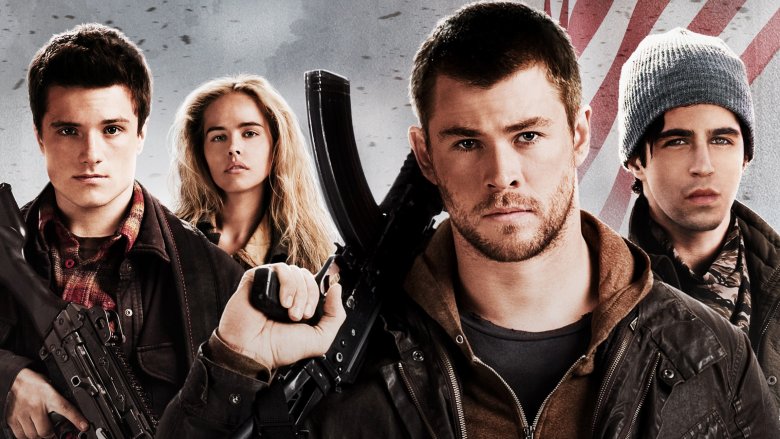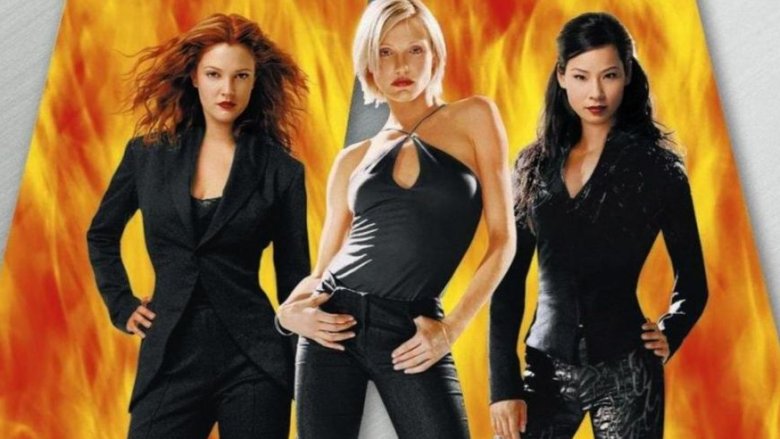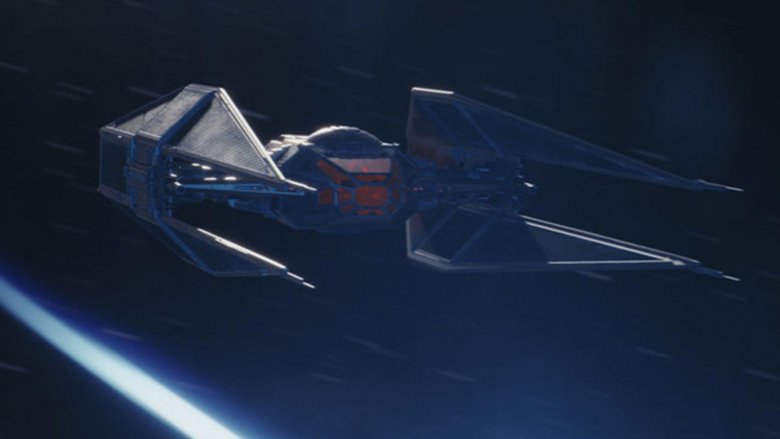Movie Details That Were Changed For Bizarre Reasons
Much as film fans tend to think of any given movie as "belonging" to the director, star, or screenwriter, anything that ever ends up making it to the screen is always the work of dozens of different people. Filmmaking, in fact, is an intensely collaborative effort, and even a casual glance at the credits of a modern blockbuster is enough to prove that entire massive teams are often brought to bear on creating our entertainment. Of course, with all those individuals involved, visions are bound to clash while everyone works together to determine what the final product should look like — and also how best to appease the notoriously fickle viewing public.
Given all that, it isn't at all that surprising that many movies are changed extensively throughout the production process. Often, while we may not agree with them in retrospect, the reasons for these changes are easy enough to understand; sometimes, however, things can take a turn for the truly bizarre. With that in mind, we're taking a look at some times when studios, directors and even actors insisted upon making changes to a movie for exceedingly strange reasons.
Licence to Kill
Considered by many fans and critics to be a something of a slight misstep in the long-running James Bond series, Licence to Kill is a divisive Bond movie to say the least. Notably the first Bond movie not to take its name directly from one of Ian Fleming's stories, its title is an obvious reference to James Bond's famous MI6 license to smoke anyone he felt like. The problem is that the crux of the movie's story is that Bond isn't an MI6 agent anymore — something the film's original title alluded to.
Initially the movie was supposed to be called Licence Revoked as a not-so-subtle nod to Bond's change of fortune. The problem? Early test audiences in America assumed that the title referred to James Bond losing his driver's license, which paints an altogether more wholesome view of a movie in which Bond punches someone into the gaping maw of a hungry shark. Eager to avoid audiences making this mistake, the studio arranged for a hasty title change, which meant a bunch of marketing material that had already been created featuring the original name ended up being thrown straight into the trash.
Titanic
The 2012 re-release of Titanic contained a number of minor, almost imperceptible changes, many of which are barely worthy of note. For the most part, these changes fixed otherwise minor mistakes fans had noticed over the years since the movie's initial release, like filming equipment or safety cables being briefly visible in some shots. Although Cameron himself has thus far refused to comment on the bulk of the changes, eagle-eyed fans poring over the re-release have noticed and chronicled at least a dozen CGI fixes.
Curiously, one of the most subtle changes made to the movie is the only one Cameron has ever directly confirmed: the stars Rose sees as she's lying on that big door. According to Cameron, he received "a snarky email" from celebrity astrophysicist Neil deGrasse Tyson explaining that the stars in the sky during that scene were all wrong for the time period. Somewhat annoyed, Cameron sent back a snarky email of his own asking for the correct star field, which Tyson happily provided. Cameron then passed this onto the team re-mastering the movie so that the stars in that scene could be changed — or to put it another way, James Cameron moved the heavens themselves just to make Neil deGrasse Tyson be quiet.
Eraser
Eraser is a mid-'90s Arnold Schwarzenegger action movie that received disappointing reviews. Nevertheless, the film is chock-full of all the schlocky Schwarzenegger-y goodness you'd expect from one of the star's films, including an action scene during which he endlessly fires two hyper-powerful future-guns into a crowd of faceless bad guys and another that finds him kicking a large CGI alligator in the face.
The plot revolves around a company called Cyrez that's trying to manufacture the aforementioned future-guns to sell on the black market. Originally, the company was called Cyrex because, well, how future does that sound? However, just before the film was set to be released, a Texan computer chip manufacturer called Cyrix caught wind of it and threatened to sue Warner Bros. because they didn't want to be associated with a fictional company that made cool future-guns. Not wanting to fight the issue in court, Warners begrudgingly spent a reported $1 million changing the name to Cyrez with dubbing and CGI.
The Shining
In the Stephen King novel that Stanley Kubrick's The Shining is based on, most of the story's action takes place in room 217. However, in the film adaptation, this is changed to 237 — which confused fans of the book, given Kubrick's reputation for perfectionism. As it turns out, while the change was made by Kubrick, he was only acting on the wishes of the Timberline Lodge, the hotel where the movie was filmed. The Timberline didn't have a room 237, but they really did have a room 217, and management didn't want their guests to be scared of staying in that particular room after the movie was released. One of the few conditions they had for filming was that this single detail be changed.
According to author James Howard, Kubrick agreed to change the number largely as a favor to the Lodge — and amusingly, in direct contrast to their initial fears about the film and its potential impact on the room's popularity, the Timberline would later report that despite Kubrick changing it, room 217 is still the most commonly requested in the entire hotel.
Red Dawn (2012)
In early cuts of the 2012 remake of the '80s teen adventure Red Dawn, the film revolved around the concept of mainland America being invaded by the Chinese. Originally slated for a 2010 release, the movie was put on hold by MGM during a period of financial turbulence at the studio — and when Chinese state media caught wind of the film via a leaked script, the situation went from bad to worse. China condemned the movie's themes — specifically its plans to depict the nation as an invading war machine that had to be stopped by a plucky band of American kids.
To appease Chinese censors and potentially have the film screened for the increasingly lucrative Chinese box office, MGM paid to have all the Chinese flags replaced with North Korean ones using CGI. Unfortunately, even after making the change, the movie was doomed to Chinese exile — upon the revised version's submission, censors still refused to allow the movie to air in China.
Charlie's Angels
The Charlie's Angels film series is a lot of fun, but it isn't exactly known for being high cinema, and it would seem safe to assume that most of the actors involved understood that none of it was never supposed to be taken seriously. Apparently Crispin Glover, who played the villainous Thin Man, never got this memo — he reportedly had some choice words for director McG about his character's dialogue. Specifically, as Glover would later tell the Guardian in 2015, he disliked that all of his lines were "just expositional," and requested that his character instead just be mute.
Rather than being offended at being told all of the lines written for the character were awful, McG agreed and fully supported Glover's idea of making the Thin Man completely mute. As a result, Glover didn't have any lines for either Charlie's Angels movie and got paid for literally saying nothing throughout the franchise.
Star Wars: The Last Jedi
During The Last Jedi, in addition to showing off his swollen pecs and pasty Sithpack, Kylo Ren debuts his personalized TIE silencer. Outfitted with giant missiles, a giant laser cannon and sporting an impossibly cool black paint job, the ship cuts an imposing silhouette that reminds the audience — and Kylo Ren's enemies — of the First Order's power.
It was also changed because of a children's toy.
In early concept art, Ren's TIE silencer sported missiles that were housed on the ship's underside, ready to be be deployed and fired as needed. However, according to director Rian Johnson, during production he received a prototype toy version of the ship from Hasbro and noticed that the missiles had mistakenly been mounted on its wings. Surmising that it'd be easier to just change Ren's ship in the film using CGI rather than redesign the toy itself, Johnson alerted the VFX team about the alteration, and it was corrected with the audience none the wiser.
